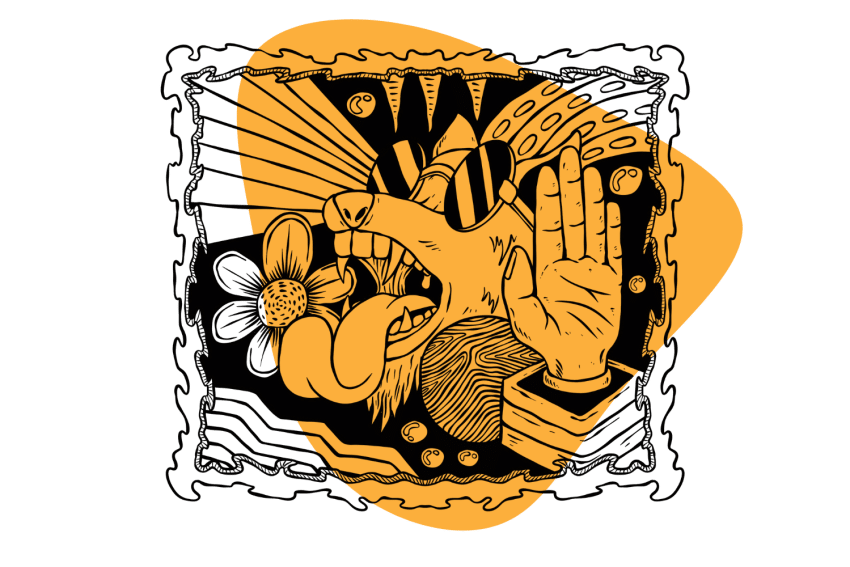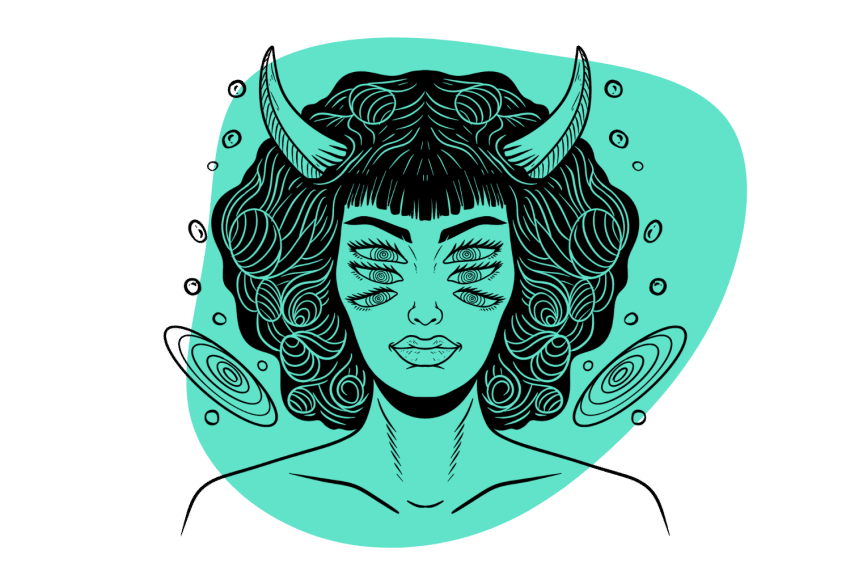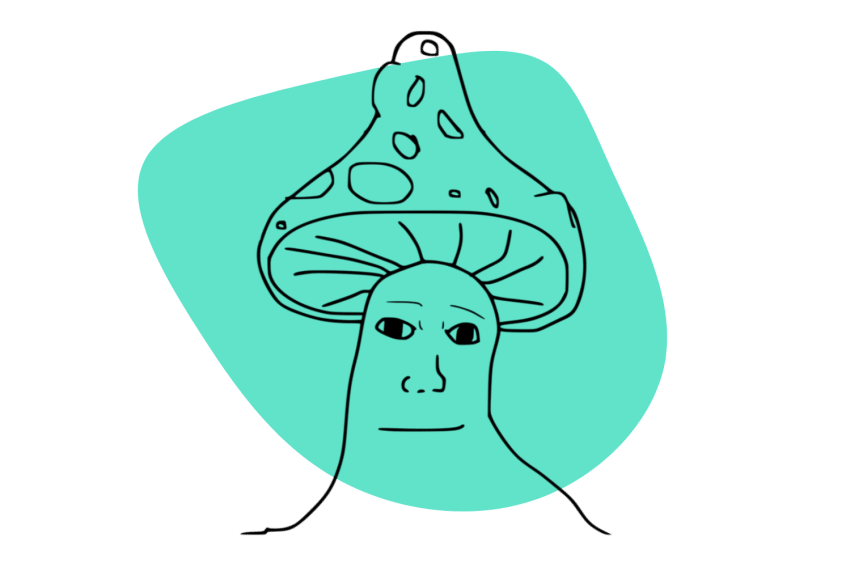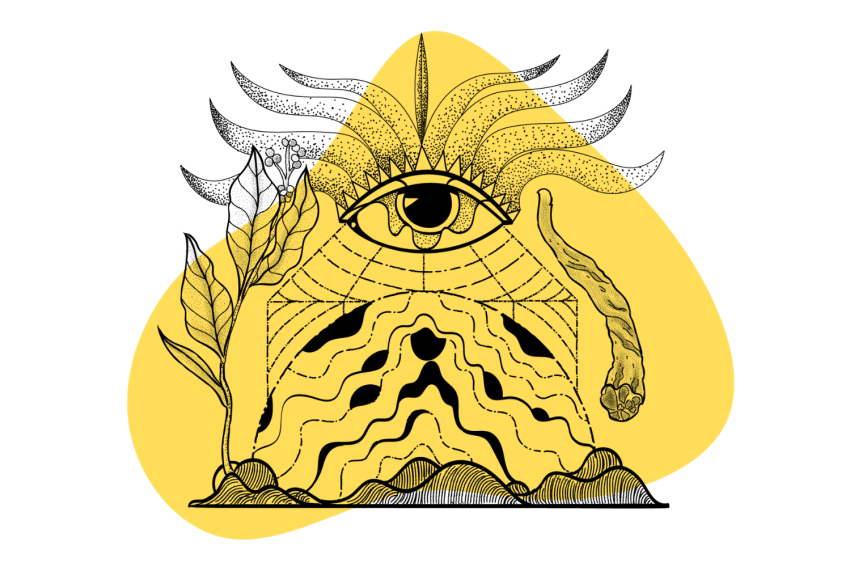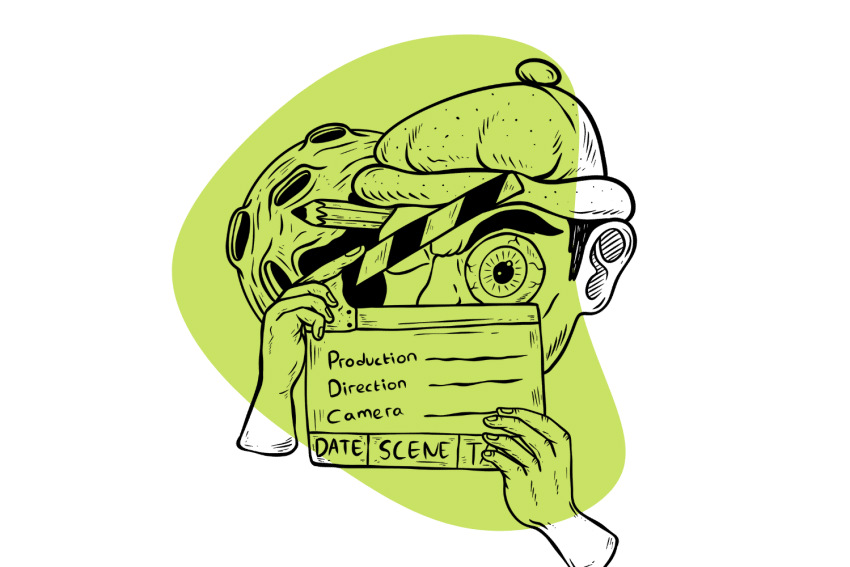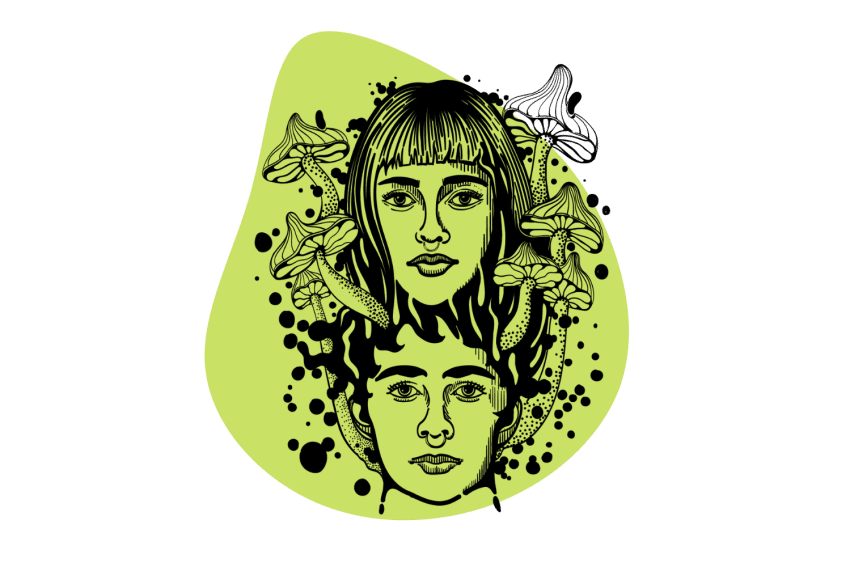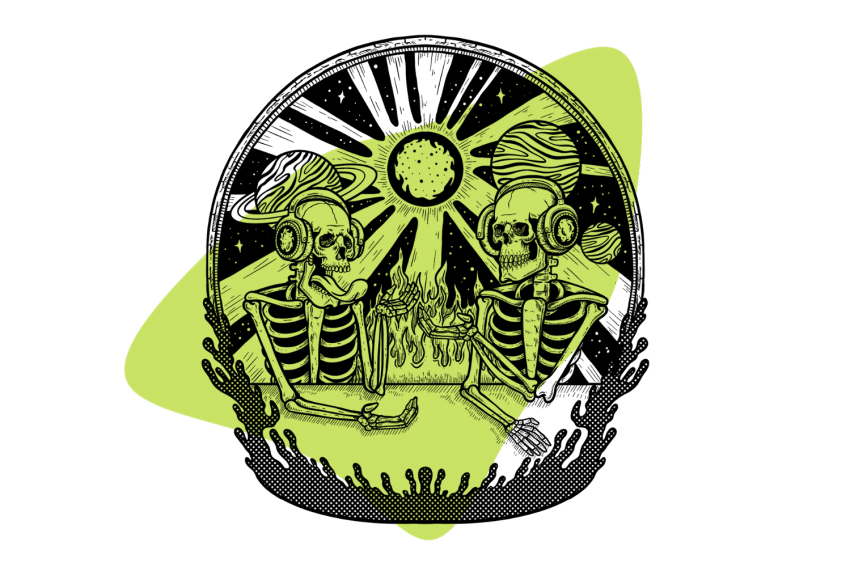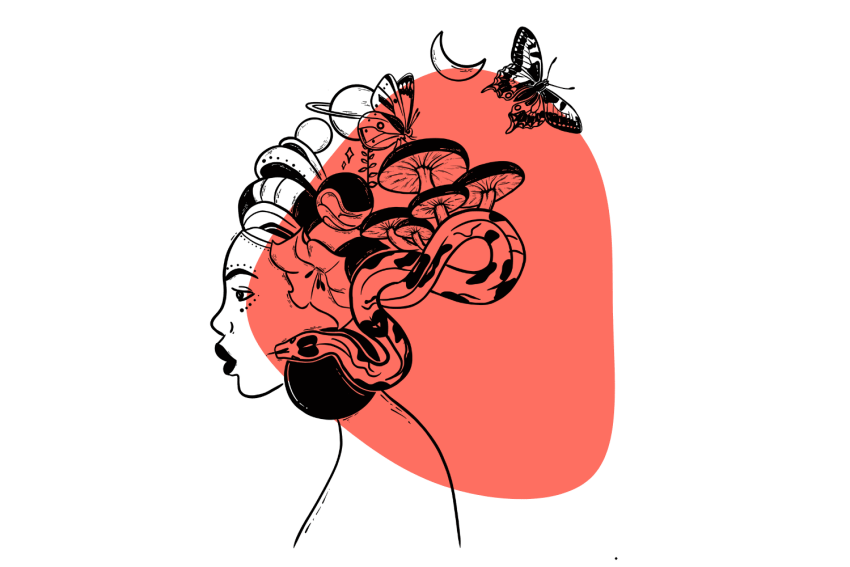Going for Gold: Investigating the Benefits of Psychedelics for Athletes
As psychedelics become more mainstream, people are starting to explore their potential for applications beyond mental health 🥇
Some claim psychedelic substances such as LSD (lysergic acid diethylamide), magic mushrooms, and mescaline can improve physical performance by allowing athletes to tap into deeper “flow states” and body awareness.
Others suggest they help users think creatively and cope better under stressful situations.
Can these psychoactive substances really give athletes an advantage, or are they just tripping?
Find out how athletes use psychedelics to think more clearly, remain calm under pressure, and induce flow states during training. We’ll also explore the difference between casual microdosing for athletic performance and professional psychedelic-assisted psychotherapy.
How Psychedelics Can Benefit Sports Performance
The topic of using psychedelics such as mushrooms and LSD in sports remains relatively uncharted territory. These substances are still illegal in most countries, and athletes are reluctant to participate in — or at least talk about — using these compounds since doing so could jeopardize their careers.
Still, the many personal accounts of using these psychedelic drugs to reach impressive athletic feats are hard to ignore.
Let’s look at the evidence supporting psychedelic science and how it’s applied to sports performance.
Stress Reduction & Mental Health
Good mental resilience and stress management is essential for making quick decisions and executing precise movements.
There’s evidence that psychedelic drugs, such as psilocybin (magic mushrooms), LSD, and MDMA, may have the ability to reduce anxiety and stress in individuals with certain mental health conditions, such as depression, anxiety, and post-traumatic stress disorder (PTSD) [2, 3].
One proposed mechanism is that psychedelics can promote “neuroplasticity,” or the brain’s ability to adapt and change in response to new experiences. It’s also involved in learning new tasks and recovering from injuries.
A study published in Neurobiology of Learning and Memory found that psilocybin mushrooms improved the cognitive flexibility in test subjects, leading to a reduction of “negativity bias and rumination,” which is when someone has a hard time thinking positive thoughts and gets stuck in negative ones [4].
Improved Focus & Concentration
Intense focus — also called “flowstates” — are critical for athletic performance because it allows an athlete to tune out all distractions and become fully present in the moment. This sensation is described as the feeling of peak performance or “wu wei” and is highly sought after by athletes.
In this state, athletes can process information more quickly, make split-second decisions, and execute precise movements that push their physical and mental limits further than usual.
Psychedelics change how the brain processes information, and it’s thought that this can help an athlete enter a flow state.
Magic mushrooms and LSD increase the activity of the neurotransmitter dopamine, which is responsible for motivation and reward-seeking behavior. This may increase the individual’s drive to engage in the task and find pleasure in the process.
Enhanced Creativity & Problem-Solving
The ability to think creatively and develop new solutions could help athletes adapt and perform better in the dynamic and unexpected world of professional sports.
One study from 2019 examined how psilocybin affects people’s ability to think creatively, feel empathy, and be happy [5].
Researchers found that psilocybin encouraged something called divergent thinking, which involves generating many different ideas or solutions to a problem. The participants also claimed to have a more profound sense of empathy and felt better about their lives up to a week after taking the drug.
The potential benefits of psychedelic drugs for enhancing creativity and problem-solving abilities may translate to improved athletic performance in some individuals.
Creativity and problem-solving abilities are essential not only for athletes during competitions but also in their training. These skills can help athletes identify new training methods and techniques and adapt on the fly to changing conditions.
Reduced Perception of Fatigue
Endurance athletes, such as runners or cyclists, often push themselves to their limits. However, research shows that their brain’s perception of fatigue, rather than actual fatigue, can be a significant obstacle to achieving these goals [6].
The feeling of fatigue is a complex perception influenced by various factors, including the accumulation of lactic acid in the muscles, changes in blood glucose levels, and the release of certain hormones.
Some studies suggest that the perception of fatigue can be a bigger factor than actual muscle fatigue. It can cause an athlete to slow down or stop exercising long before their muscles actually tire.
Endurance athletes must train their minds and muscles to overcome this perception of fatigue and perform at their best.
There is currently a lack of scientific research on the potential effects of psychedelics on endurance athletes and their ability to overcome fatigue.
However, there have been anecdotal reports from some athletes, such as marathon runners, who claim to have surpassed their personal records while under the influence of psychedelics, attributed to a lack of feeling fatigued.
History Of Psychedelics & Physical Enhancement
Many indigenous cultures worldwide have a history of psychedelic use for spiritual and physical enhancement.
For instance, ayahuasca, a psychedelic brew made from the Banisteriopsis caapi vine and the Psychotria viridis shrub in South America, has documented use in supporting physical vigor and mental acuity among elders [1].
Peyote, a small, spineless cactus containing the entheogenic compound mescaline, was used by the indigenous people of Mexico and the southern United States to suppress fear and hunger in hunters and warriors.
While the rest of the world may never fully understand the mysterious and powerful effects of psychedelic plants, for these indigenous communities, they’re important tools in their arsenal for survival.
Examples of Athletes Who Used Psychedelics
Many athletes may not be willing to openly discuss their use of certain drugs. They are prohibited in professional sports and illegal in many countries, making it difficult to gather information on the subject and understand the full extent of their use in the athletic community.
However, a significant amount of anecdotal evidence indicates that psychedelics may enhance athletic performance in the underground extreme sports community.
But before we dive into the fringes of extreme sports, let’s look at a famous psychedelic use in a mainstream sport, baseball.
Dock Ellis’ LSD No-Hitter
On June 12, 1970, Dock Ellis took the mound for the Pittsburgh Pirates in a game against the San Diego Padres. No one knew at the time, but Ellis was not exactly in his right mind.
You see, Ellis had taken LSD earlier that day as he didn’t realize he would be pitching that game. Despite the powerful hallucinogenic coursing through his body, Ellis pitched a no-hitter, one of baseball’s rarest and most impressive accomplishments.
Who knew that a little LSD could bring out such otherworldly pitching skills?
As Ellis recounted it to the press:
I can only remember bits and pieces of the game. I was psyched. I had a feeling of euphoria. I was zeroed in on the [catcher’s] glove, but I didn’t hit the glove too much. I remember hitting a couple of batters, and the bases were loaded two or three times.
The ball was small sometimes, the ball was large sometimes, sometimes I saw the catcher, sometimes I didn’t. Sometimes I tried to stare the hitter down and throw while I was looking at him. I chewed my gum until it turned to powder.
I started having a crazy idea in the fourth inning that Richard Nixon was the home plate umpire, and once I thought I was pitching a baseball to Jimi Hendrix, who to me was holding a guitar and swinging it over the plate.”
To this day, Ellis’s no-hitter on acid remains one of the weirdest and most memorable moments in baseball history.
Sarah Rose Siskind Ultramarathon On LSD
Both psychedelics and endurance exercises are used for self-discovery — some people have even combined them to test their limits.
The Burning Man Ultramarathon is a long-distance running event that takes place annually in the Black Rock Desert in Nevada, USA, as part of the Burning Man festival. It’s known for its challenging and harsh conditions, including extreme heat and dryness, rugged terrain, and the potential for severe weather.
Sarah Rose Siskind is no stranger to pushing herself to the limit as a psychedelic comedian and an ultramarathon runner.
In 2019, she decided to take on her biggest challenge: running an ultramarathon on LSD at Burning Man.
She hoped that the LSD would help her tap into a deeper state of mind and find healing through the physical and mental challenges of the race.
Despite the searing heat and the harsh terrain, she powered through the miles, fueled by the LSD and her inner strength.
When she finally crossed the finish line, Siskind was filled with a sense of accomplishment and joy. She had pushed herself not only physically but also mentally and spiritually. As Siskind recounts, it was a genuinely transformative experience she would never forget.
Psychedelics In the Extreme Sports Underground
Psychedelics and extreme sports may have similarities in that they both involve a certain level of risk-taking and can produce intense experiences that alter one’s perception of reality.
I love the quote by James Oroc, an extreme sports athlete and journalist, about this pairing:
Psychedelics and sports, incredibly, can go together like cheese and bread. An enhanced spiritual appreciation of the natural environment, along with increased stamina and an almost unnatural improvement in balance, are too powerful of a combination not to become sacred amongst mountain-athletes.”
In Oroc’s article, Psychedelics and Extreme Sports, he interviews multiple extreme sports athletes (skiers and snowboarders, mountain bikers, surfers, and rock climbers) who have used mushrooms and LSD to enhance their experience.
According to Oroc, there were always “experienced psychedelic users” in the extreme sports community, with LSD or acid being among the most favored:
LSD can increase your reflect time to lightning speed, improve your balance to the point of perfection, increase your concentration until you experience “tunnel vision,” and make you impervious to weakness or pain.”
The use of psychedelic drugs in extreme sports is often linked to their countercultural and fringe elements.
Both extreme sports and psychedelics involve pushing the mind’s and body’s limits. Many people participating in extreme sports also seek transcendent experiences.
This shared spirit of experimentation and adventure may lead some extreme sports enthusiasts to try psychedelic drugs as a form of deeper self-exploration.
The Current State Of Research On Psychedelic Drugs & Athletic Performance
Currently, psychedelic drugs are illegal in many parts of the world, making drugs like LSD and psilocybin more challenging to research.
Despite this, the potential benefits of psychedelic drugs for sports performance are an area of growing interest and investigation.
The University of Southern Denmark held an international Think Tank on Athlete Mental Health in September 2018, organized by the International Society of Sport Psychology [9].
The purpose of the Think Tank was to bring together major sport psychology organizations to discuss current issues and future challenges in the field of athlete mental health and to create recommendations for sports organizations and researchers.
Several studies have pointed to significant levels of mental illness among elite athletes, which is a big concern.
The organization acknowledges that the pressure to win at international sporting events has ramped up for professional athletes, and just as there needs to be a balance between physical training with rest to improve, there also needs to be a balance between the mental demands of sports with ways to take care of mental health.
One area recommended to support athletes is psychedelic-assisted therapy.
Psychedelic-assisted psychotherapy is a new way of treating mental health problems using drugs like ketamine, MDMA, psilocybin, LSD, and ibogaine.
These drugs are used in a controlled way under the supervision of trained professionals. So far, this treatment has proven safe and effective, even for people who haven’t responded well to other therapies [8, 10].
This is crucial for mental health professionals because it could significantly change how we understand and treat mental health problems.
Microdosing Psychedelics for Sports Performance Enhancement
Microdosing involves taking very small doses of psychedelic drugs, typically one-tenth to one-twentieth of a full recreational (or therapeutic) dose.
The idea behind microdosing is that these small doses can produce subtle but beneficial changes in mood, creativity, and productivity — without causing intense hallucinations and other psychedelic effects.
Microdoses are typically used every 2 or 3 days rather than just once. They don’t produce a sudden, profound change in the way one thinks or acts, but they facilitate the development of new, productive habits. Often, the benefits — focus, concentration, mood, and body awareness — come over time.
The most common psychedelics used for microdosing are LSD and magic mushrooms, but others can be used as well.
In terms of athletic performance, many believe microdoses of mescaline are even better than LSD or psilocybin because it tends to work better for connecting people to their own bodies and has a slightly stimulating action.
There are some anecdotal reports of benefits from microdosing, such as increased focus and creativity, improved mood, and reduced anxiety — but again, there isn’t enough substantial research on the effects of microdosing, especially as a performance-enhancing aid in sports.
Potential Risks & Drawbacks Of Using Psychedelic Drugs for Athletic Performance
You can’t just take psychedelics and expect to become a better athlete. These substances need to be used responsibly and alongside a well-planned training regimen. The timing, dosage, and substance selection are all critically important.
Get any of these wrong, and you could end up harming your athletic performance rather than helping it.
Here are the downsides and risks of taking psychedelics for athletic gain.
Anti-Athletic Effects of High-Dose Psychedelics
Psychedelic drugs can have unpredictable effects. In high enough doses, they cause hallucinations, confusion, and other mental and physical side effects.
These effects can not only reduce one’s athletic performance; they could even be dangerous in a high-risk athletic environment or during intense physical activity.
Professional Drug Testing
Psychedelic drugs such as psilocybin, LSD, and DMT are not on the World Anti-Doping Agency’s (WADA) list of prohibited substances.
WADA’s list of prohibited substances and methods is based on the World Anti-Doping Code, which is reviewed and updated regularly. These substances have therapeutic potential and have been used in research studies, but they are not yet accepted as medication by international health agencies.
However, the use of these substances may still be prohibited by sports organizations or by the laws of the country where the athlete competes. Legality is possibly the biggest hindrance to using psychedelics for any reason.
The Takeaway: Psychedelics & Sports
While the use of performance-enhancing drugs like steroids in sports is well-known, the use of psychedelics to boost athletic performance is a less explored topic. Still, it’s been a trending topic, especially among endurance and fringe extreme sports athletes.
The accounts of people using LSD and mushrooms to enter flow states and push past their limits to execute extraordinary athletic feats are hard to ignore. Due to the major stigmas surrounding psychedelic drug use and possible safety concerns, whether or not these psychoactive substances can truly give athletes an edge remains to be seen.
While the idea of athletes using psychedelics may seem unusual, it is an intriguing topic that’s definitely worth exploring further.
References
- Callaway, J. C., McKenna, D. J., Grob, C. S., Brito, G. S., Raymon, L. P., Poland, R. E., … & Mash, D. C. (1999). Pharmacokinetics of Hoasca alkaloids in healthy humans. Journal of ethnopharmacology, 65(3), 243-256.
- Schimmel, N., Breeksema, J. J., Smith-Apeldoorn, S. Y., Veraart, J., van den Brink, W., & Schoevers, R. A. (2022). Psychedelics for the treatment of depression, anxiety, and existential distress in patients with a terminal illness: a systematic review. Psychopharmacology, 239(1), 15-33.
- Lowe, H., Toyang, N., Steele, B., Grant, J., Ali, A., Gordon, L., & Ngwa, W. (2022). Psychedelics: Alternative and Potential Therapeutic Options for Treating Mood and Anxiety Disorders. Molecules, 27(8), 2520.
- Magaraggia, I., Kuiperes, Z., & Schreiber, R. (2021). Improving cognitive functioning in major depressive disorder with psychedelics: a dimensional approach. Neurobiology of Learning and Memory, 183, 107467
- Mason, N. L., Mischler, E., Uthaug, M. V., & Kuypers, K. P. (2019). Sub-acute effects of psilocybin on empathy, creative thinking, and subjective well-being. Journal of Psychoactive Drugs, 51(2), 123-134.
- Gibson, A. S. C., Baden, D. A., Lambert, M. I., Lambert, E. V., Harley, Y. X., Hampson, D., … & Noakes, T. D. (2003). The conscious perception of the sensation of fatigue. Sports Medicine, 33(3), 167-176.
- Nichols, D. E. (2016). Psychedelics. Pharmacological reviews, 68(2), 264-355.
- Breeksema, J. J., Niemeijer, A. R., Krediet, E., Vermetten, E., & Schoevers, R. A. (2020). Psychedelic treatments for psychiatric disorders: a systematic review and thematic synthesis of patient experiences in qualitative studies. CNS drugs, 34(9), 925-946.
- Henriksen, K., Schinke, R., Moesch, K., McCann, S., Parham, W. D., Larsen, C. H., & Terry, P. (2020). Consensus statement on improving the mental health of high performance athletes. International Journal of Sport and Exercise Psychology, 18(5), 553-560.
- Walton, C. C., & Liknaitzky, P. (2022). Advancing elite athlete mental health treatment with psychedelic-assisted psychotherapy. Journal of Applied Sport Psychology, 34(3), 605-623.

